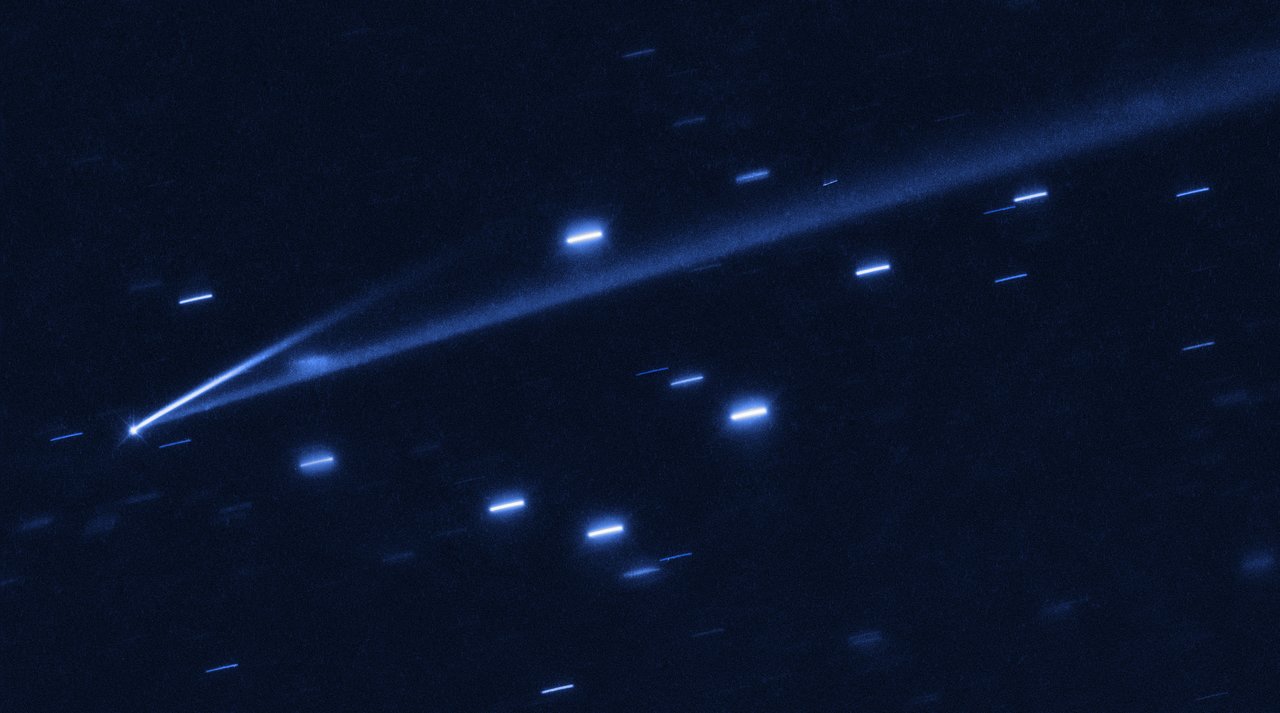
Hubble has observed something unusual in the sky — a self-destructing asteroid called 6478 Gault, or simply Gault for short. But what caused it?
The Gault asteroid, named after planetary geologist Donald Gault, is between four and nine kilometers long (that’s 2.5 to 5.6 miles) and has a distinctive double tail. The two comet-like tails of debris are evidence of activity in which the asteroid is ejecting material into space, suggesting that Gault is breaking apart.
The asteroid is disintegrating due to a process called YORP torque (short for the Yarkovsky–O’Keefe–Radzievskii–Paddack effect) which is caused by the scattering of solar radiation. Sunlight hits the asteroid and heats it, producing infrared radiation which is sent out into space and which carries heat and momentum with it. This creates a force which in rare cases can make an asteroid spin faster.
As the asteroid spins faster and faster, the centrifugal force pulling the asteroid apart eventually becomes more powerful than the gravitational force holding it together. When this happens, rocks and dust are pulled off the surface of the asteroid and create a tail of debris.
“This self-destruction event is rare,” Olivier Hainaut of the European Southern Observatory, Germany, explained in a statement. Of the 800,000 asteroids in the belt between Mars and Jupiter, astronomers estimate that only one YORP disruption is seen per year.
But Hubble and other new telescopes are now able to view these wild asteroids as they disintegrate. “Active and unstable asteroids such as Gault are only now being detected by means of new survey telescopes that scan the entire sky,” Hainaut said, “which means asteroids such as Gault that are misbehaving cannot escape detection any more.”
Gault is important not only because it is rare to see a YORP event in action but also because it is believed to have a rotation period of two hours, which is right on the border of the speed required for the YORP effect to kick in. “Gault is the best ‘smoking-gun’ example of a fast rotator right at the two-hour limit,” lead author Jan Kleyna of the University of Hawaiʻi, confirmed in the statement. “It could have been on the brink of instability for 10 million years. Even a tiny disturbance, like a small impact from a pebble, might have triggered the recent outbursts.”
One tiny pebble, eh?
The findings will be published in The Astrophysical Journal Letters.



